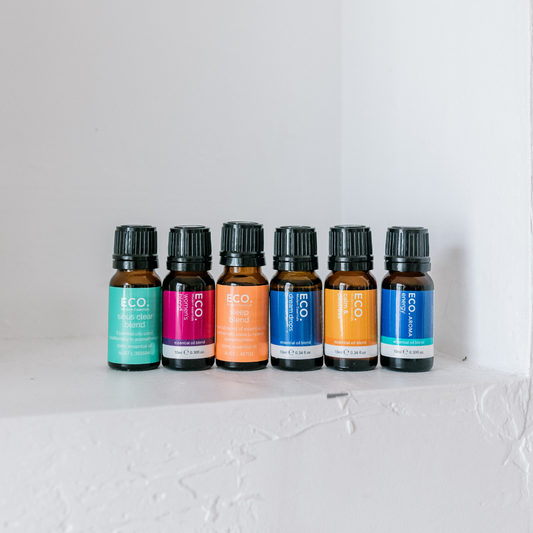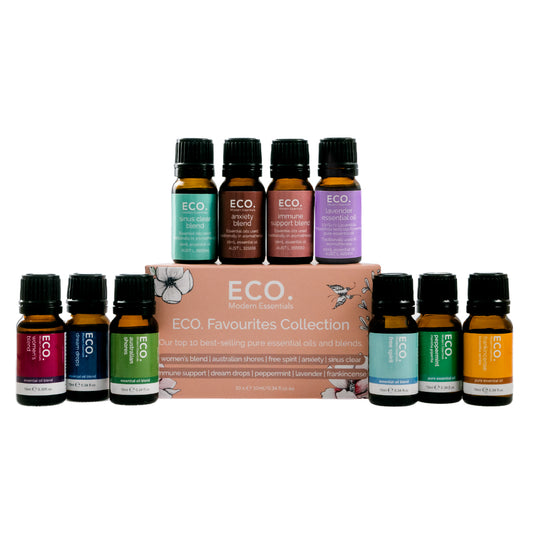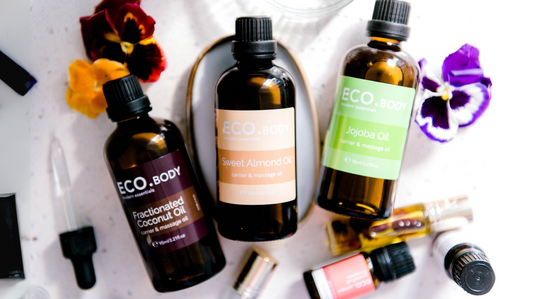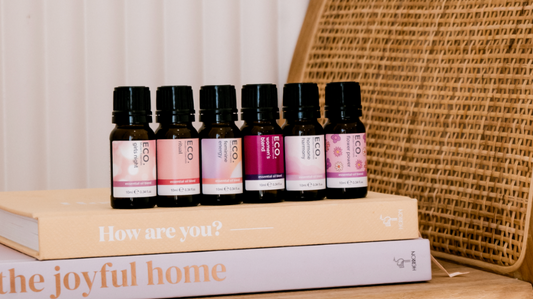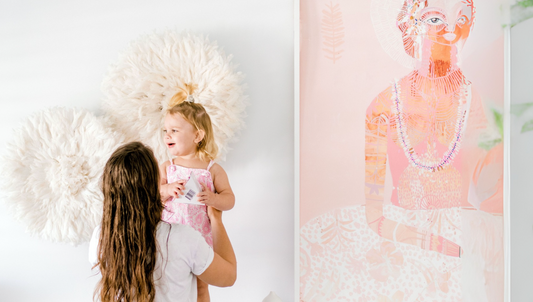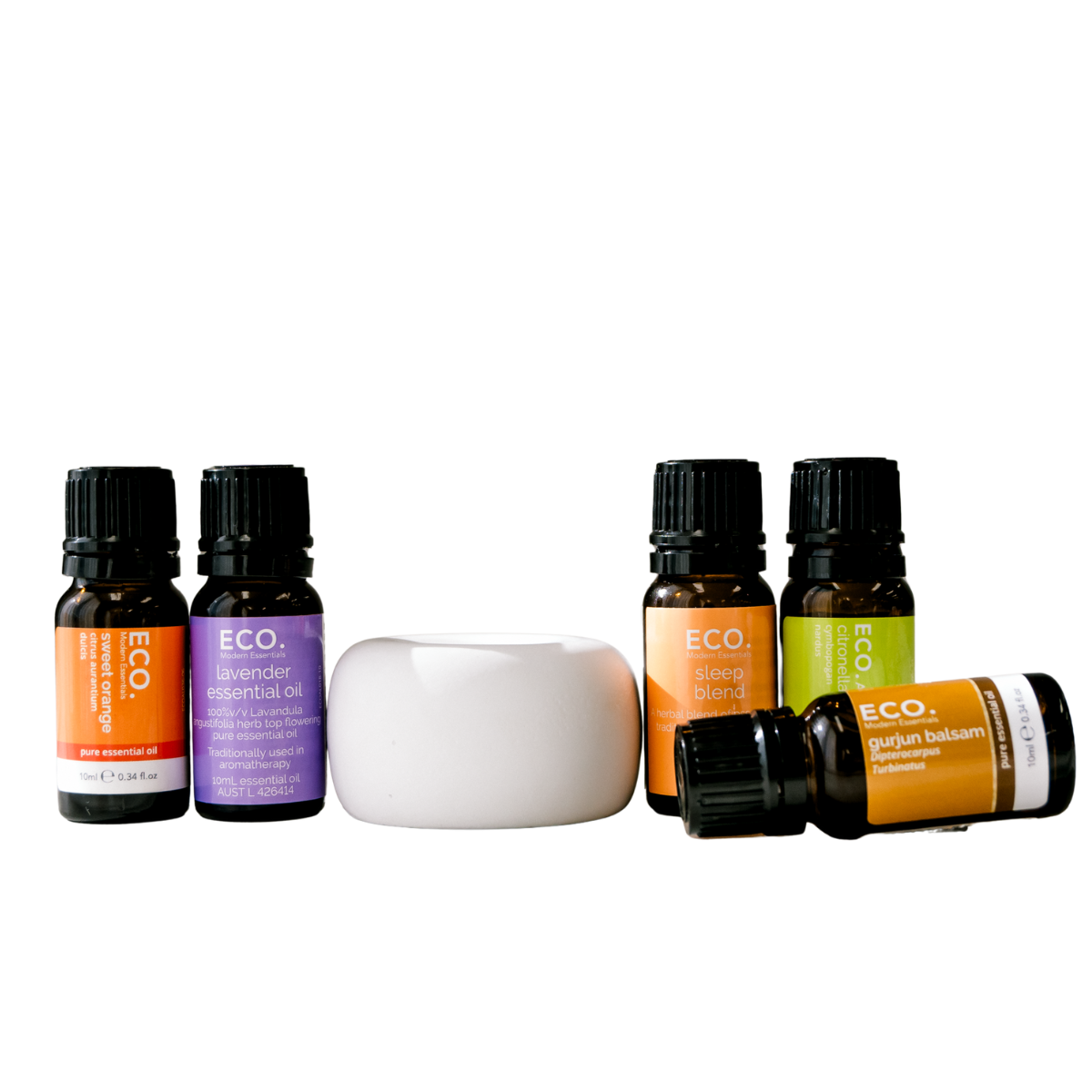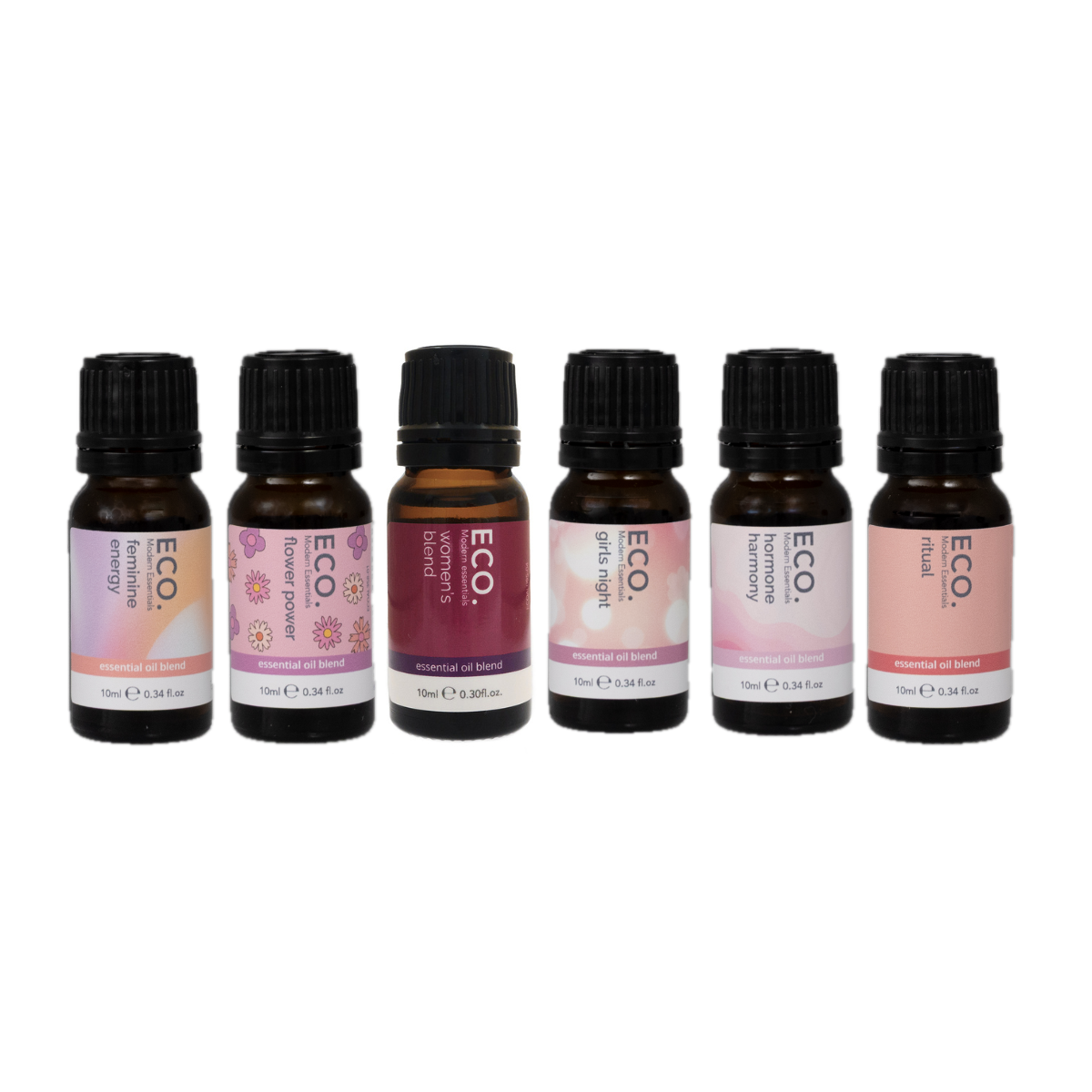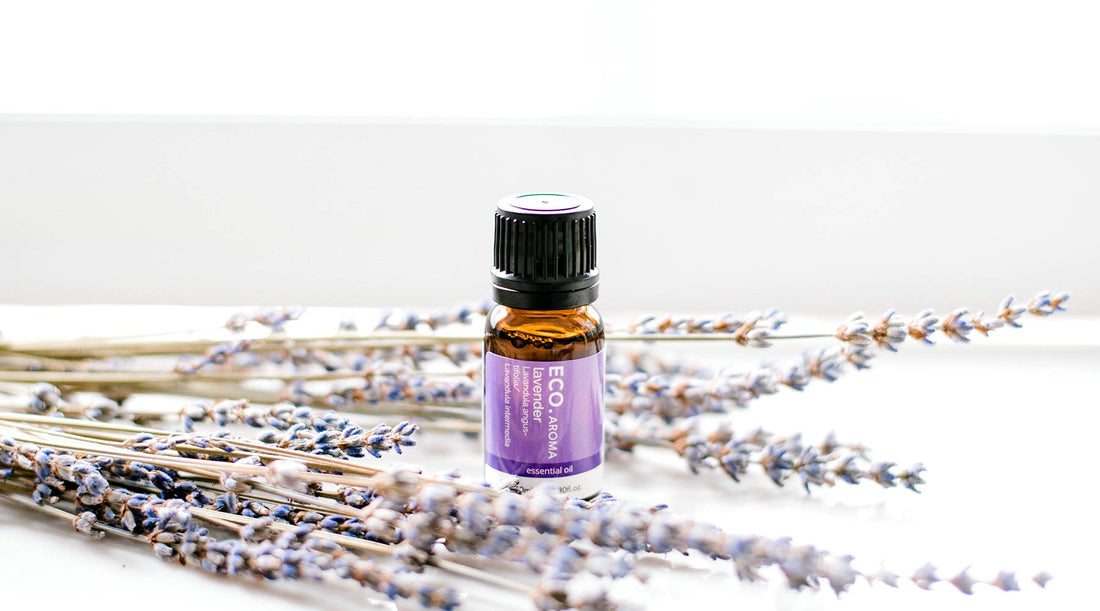
Benefits & Uses of Lavender Essential Oil
Lavender is one of the most well-known and widely used essential oils in the world. How lucky we are to have beautiful and healing Lavender in our world. A plant so useful and revered that some cultures ascribed it with magical properties. From the every day task of disinfecting a grazed knee to the lofty quality of seeking peacefulness through meditation, the herbaceous floral scent has been an accompaniment to our lives throughout countless generations. The benefits of lavender extend from therapeutic to cosmetic purposes, making it an extremely versatile essential oil due to its high antioxidant, antimicrobial, calming and sedative properties.
Where is Lavender essential oil from?
Our Lavender essential oil (Lavandula angustifolia/ Lavandula intermedia (Lavender) oil) originates from the beautiful fields of France & Bulgaria, where it grows abundantly. The oil is produced through steam distillation using Lavender flowers, which gives it its sweet, floral and herbaceous scent. We also have Australian Lavender essential oil (Lavandula angustifolia oil) captures the essence of the rugged landscape of Tasmania, where it is sourced from and Organic Lavender pure essential oil (Lavandula angustifolia oil) which is produced in the most harmonious way to the planet, in Bulgaria, giving the consumer peace of mind that the product is assured to have been grown and processed without the use of synthetic chemicals, fertilisers or GMOs.
How is Lavender essential oil made?
Lavender is harvested every year sometime between July and August depending on the region. The plant produces its best yield after 10 years. It is often picked in the early morning to ensure the freshness of the flowers and allowed to dry for a few hours. Lavender flowers are loaded into a vessel and compacted either by a large truck tire or by the workers who stand and step on the flowers with their feet. When full, the vessel is sealed and is filled with low pressure steam. Lavender water (or yield at around 10 years old. Lavender hydrosol), a by-product of essential oil production, is collected in a separate container. The essential oil rises above the water and is collected separately.
What does Lavender look like?
The unmistakable purple flowers will likely give Lavender away, ranging from a soft to a deep, rich purple colour. Reaching from the earth tall and proud with their green foliage, the perennial plants scent imparts a feeling of familiarity and comfort.
What does Lavender essential oil smell like?
Similar to the benefits of Lavender essential oil, some say it is the smell of calm & comfort. It is a sweet, delicate and soft floral scent.
History of Lavender
Lavender essential oil was used over 2,500 years ago by Egyptians as a perfume and for mummification. The Romans used the sweet scented flowers for bathing and cleanliness. Lavender comes from the Latin verb lavare meaning to wash. In Roman society Lavender was thought to have magical powers. It was a treatment option for anything from preserving chastity to curing baldness. Lavender is frequently mentioned in medical treatises and herbals from Greek, English and French practitioners. In 1653 Culpepper recommended Lavender for fainting, seizures and cramps. Today, Lavender is one of the most popular essential oils as it has a wide range of therapeutic actions and its gentle nature makes it safe for people of all age groups to enjoy.
Benefits & uses of Lavender essential oil:
Lavender is often thought of as a caring and nurturing Grandmother. An able multi-tasker, she is wise, serene, compassionate and knows how to cure all of life’s little complications and ills.
1. Getting the right amount of sleep is vital for maintaining health. What happens when we just can’t seem to fall asleep? Thankfully, Lavender essential oil is here to help us drift off. Full of calming compounds, such as esters, Lavender slows the central nervous system and guides us towards peace and hopefully deep sleep. A few drops on a pillow or diffused in the bedroom can help you float off into a healing sleep. A few drops is all that is needed. Too much Lavender can actually have the opposite effect and become too stimulating. A warm bath or shower using Lavender body wash can be very relaxing before bed. There are reports that placing a cotton wool ball with a few drops of Lavender near the air intake vent of a CPAP machine can help the wearer have a more restful sleep. Contact your machine manufacturer to confirm that this is safe for your CPAP model if you would like to try this. Allow the magic of Lavender to make sleep less elusive tonight.
2. Long term stress can lower the immune system, cause muscle pain and fatigue, decrease memory, effect sleep, and weaken digestion. Over time these effects may begin to cause a deterioration of our overall health and eventually could lead to disease. It is vital for our health to monitor stress levels and act if needed. Lavender seems to have an almost adaptogenic action on the nervous system. During periods of extreme stress, this essential oil has a profoundly relaxing action. During normal levels of stress Lavender seems to provide some relaxation but not to the point of sedation, allowing us to get on with the day. In fact, Lavender is often recommended to assist in clear thinking as it can help manage stress levels that cloud our judgement. Lavender can be used in a massage blend, a perfume or in the diffuser to help balance the nervous system. Other essential oils that are useful for alleviating stress include Mandarin, Buddha Wood, Frankincense, Neroli, Copaiba and Sandalwood. Although, any essential oil that you enjoy provides tends to positively enhance your mood.
3. There are many causes of muscular pain including inflammation, overuse and prolonged stress. Lavender has anti-inflammatory, analgesic and sedative properties which combine to make a gentle yet effective muscle soother. Use either a hot or cold compress over the painful area or make a 2.5% dilution of Lavender massage oil to apply gently to tired and tender muscles. Lavender can be used to relieve aching muscles during pregnancy and help with pain caused by neuralgia, arthritis, or PMS. Other essential oils that are commonly used for muscle pain include Black Pepper, Chamomile, Peppermint, Eucalyptus, Clary Sage, Kunzea and Wintergreen.
4. Modern aromatherapy began with a tub of Lavender. Rene-Maurice Gattefosse accidently burnt his arm and plunged the painful limb into the nearest tub of liquid. Luckily, the liquid was Lavender essential oil. Gattefosse, impressed with how quickly and well his burn healed, began studying the effects of essential oils on other health complaints. Lavender has many properties that combine to make a powerful skin tonic. Cooling and anti-inflammatory properties help treat burns and sunburn. Lavender also has a strong anti-bacterial and skin growth (cicatrisant) effect that is useful to treat open wounds and minor skin infections including acne. Itchy bug bites can also be treated with a drop of neat Lavender essential oil. Lavender is one of the few essential oils that can be applied neat to the skin to treat small areas such as wounds, scratches, boils and minor burns.
5. A versatile ingredient that can be used for all skin types. Oily skin can benefit from the cleansing, anti-inflammatory and anti-bacterial nature of Lavender in the management of acne, pimples and blemishes. Some skin conditions are exacerbated by stress and can usually be improved with the addition of relaxing Lavender to beauty products, face steam or in the diffuser. For normal to dry skin, Lavender is a calming addition to your skin care routine. Rosacea can also be improved with the anti-inflammatory property of Lavender. Try adding 2 drops of essential oil to your moisturiser, face oil or home-made treatment mask.
6. With calming, anti-inflammatory, anti-bacterial, anti-viral and decongestant properties, Lavender is a medicine chest in a bottle when it comes to treating respiratory complaints. A steam inhalation will help combat some strains of bacterial or viral infection in the throat and lungs. The analgesic effect can assist with the management of a sore throat. For asthma brought about by stress or hay fever, try diffusing Lavender and other decongestant essential oils. During the day Rosemary, Peppermint, Eucalyptus and Ravensara are excellent decongestants that also give an energy boost. In the evening soothing Lavender will help alleviate respiratory symptoms and encourage sleep.
7. Lavender is comforting to overwrought spirits, anxious minds and for those lost in a cloud of stress and concern. Lavender is a cooling essential oil that helps temper the heat of anger and frustration. Diffusing a blend of Lavender, Mandarin and Chamomile at about 5 p.m., or whenever cranky o’clock is at in your home, calms tired and irritable children. Because Lavender slows and balances the central nervous system this essential oil is excellent for helping us deal with any level of stress. Lavender also makes a useful addition to a meditation or study blend as it can improve clarity of thought by removing obstacles caused by stress such as an overactive, noisy mind.
How to use Lavender essential oil
- Diffuser: Add 6-8 drops of Lavender essential oil to your diffuser. You can do this at nighttime to help you relax & unwind at the end of your day and encourage a good nights sleep or perhaps while you are studying to clear your mind.
- Quick fix: A few deep inhalations from the bottle can help when you are at work, in the car or anytime you need a quick break.
- Shower: Add 2-3 drops to the corner of the shower and enjoy the benefits of steam inhalation for both the mind and skin.
- Bath: Add up to 5 drops in a dispersant such as oil, to the bath to create a relaxing atmosphere while nourishing your skin.
- Topically: Mix 1 drop of chosen essential oil with 5ml carrier oil and apply to wrists, chest or back of the neck.
- Blemishes or wounds: Lavender can be applied neat to the skin making it perfect for spot treatments - apply 1 drop to skin blemishes or wounds.
- Massage: Use a 2.5% dilution; 50 drops per 100ml carrier oil and use over the entire body, being mindful of the face.
- Face massage: Add 1 drop in 5ml carrier oil and massage into skin to help nourish, repair and regenerate.
- Hand or foot bath: Add 2 drops of essential oil to a bowl of water. Soak your feet after a long day to help release built up tension.
- Compress: Add 2 drops of essential oil to a bowl of water. For treating inflammation or to cool down use cold to room temperature water. For aching tight muscles use warm to hot water. Agitate a face washer in the water, wring out excess moisture and apply washer to the affected area. Repeat two or three times as the compress cools down or warms up.
- Steam Treatment: Add 2 drops of essential oil to a bowl of steaming hot water. Place your face close to the bowl and cover the back of your head and bowl with a towel to trap the aromatic vapours. Caution due to risk of burns or scalding and keep eyes covered during treatment.
Blending
Lavender is a treat for aromatherapy beginners because it is very forgiving in a blend. It combines well with most other essential oils and not too overpowering: it is hard to go wrong with Lavender. A lovely floral anchor for high flying citrus aromas, or to add sweetness to the earthy, wooden tones of essential oils like Vetiver, Lavender is truly compatible in a blend. Blends well with Black Pepper, Sweet Orange, Geranium, Lemon, Neroli, Ylang Ylang and Patchouli.
Lavender essential oil safety
Lavender is considered a very safe essential oil. It may be used for those with health conditions, for children and during pregnancy. However, there have been reports that Lavender should be avoided for one week before and after receiving chemotherapy. It is also good to keep in mind that Lavender essential oil may be triggering to some and bring back untasteful memories from past experiences like being in hospital, for example. Always check in with someone as to whether they enjoy the scent of Lavender essential oil.
What is the difference between different Lavender essential oils?
Have you ever noticed that there is a botanical name and common plant name on an essential oil bottle? The common name of a plant varies depending on where you are in the world. So how do we know which plant is which? A botanical name tells us precisely what plant we are using. This is important because various plants have different actions. Take Lavender for example. There are many varieties of Lavender used in aromatherapy, though the three that we see the most are:
Lavandula angustifolia (or officinalis), True Lavender
Lavandula latifolia (or spicata), Spike Lavender
Lavandula x intermedia, Lavandin
True Lavender is the variety we use the most. True Lavender has a chemical composition that makes it so calming and therapeutically valuable. On the other hand, Spike Lavender has a chemical composition similar to Rosemary. While it smells like Lavender, the essential oil is very stimulating and used therapeutically the same way we would use Rosemary. Lavandin is a hybrid of angustifolia and latifolia and is popular with growers because the crop yields a larger amount of essential oil. Each essential oil is valuable, yet as we have seen, they all have different properties. This is why it is important to know botanical names. It is also a great way to impress friends at your next dinner party.







